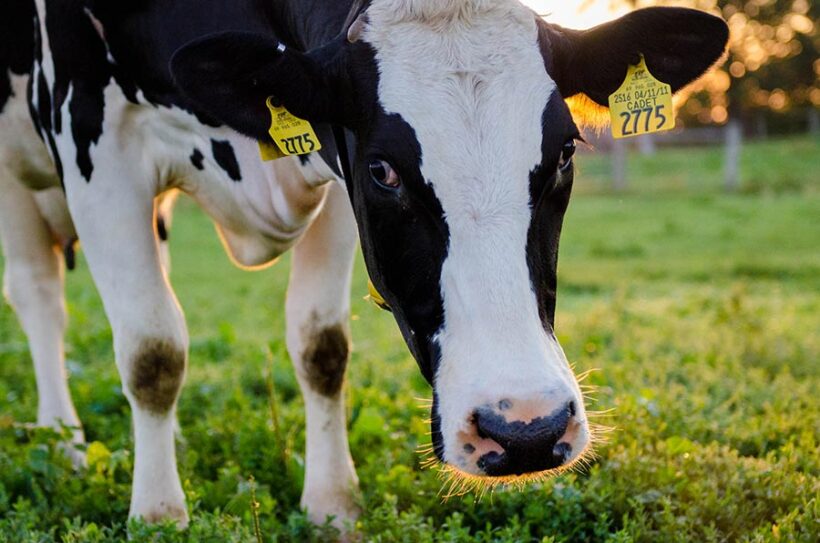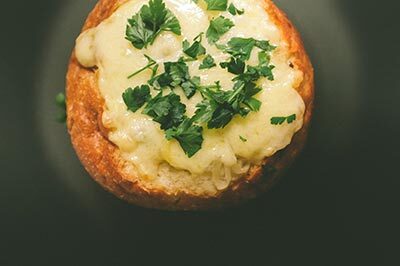Entrepreneurs Recruit Microbes to Make Moo-Free Dairy

Entrepreneurs Recruit Microbes to Make Moo-Free Dairy lead image
(Inside Science) -- Eight years ago at a press conference in London
It’s occasionally called artificial dairy, but that term irks some of those in the business of engineering microbes to make milk proteins. “We produce molecularly-identical whey and casein protein, so they are real milk proteins,” wrote Anne Gerow, senior manager of corporate communications at Perfect Day, a Silicon Valley company that works with ice cream companies to make cow-free versions of their products, some of which are already on the market. Perfect Day also hopes to produce cheese, yogurt and butter through similar laboratory-based techniques in the near future. “We usually refer to our product as animal-free dairy,” she added.
Perfect Day is just one of several biotech companies vying to successfully mass produce lab-grown dairy products. The scientists and entrepreneurs behind these efforts say they’re doing it for two reasons. Firstly, the world desperately needs more sustainable food systems. Secondly, they think there’s unmet demand for cow-free milk products that deliver the nutritional benefits and taste of traditional dairy. But while experts widely agree on the first point, we’re still waiting for hard data on exactly how eco-friendly and nutritious milk made in a lab is.
The environmental need
In a 2013 report
Image

Media credits
Media rights
“It’s not just greenhouse gases to be concerned about. Cows excrete a lot of nitrogen and phosphorous,” said Paul Kononoff, a dairy nutrition specialist at the University of Nebraska-Lincoln and editor-in-chief of the Journal of Dairy Science. Eventually, through rainwater runoff, those excreted chemicals end up in lakes and rivers where they act as fertilizers and causes excessive algae growth. That in turn decreases the water’s oxygen levels, which can kill aquatic animals and plants.
While the dairy industry has made significant improvements over recent decades and has reduced its carbon footprint per glass of milk, these advances are offset and eclipsed when population growth is factored in. For example, the FAO estimates that by 2050, the world will need to generate twice the amount of food it produced in 2009 to ensure people get enough nutrition.
Currently, 7.4% of the total milk market in the U.S. is occupied by plant-based milks such as soy or almond, and that market share is expected to grow to 18.5% by 2023, according to a 2020 study
“Things take a dramatic divergence when it comes to comparing the nutrition of milk with that of plant-based alternatives,” said Scott Rankin, professor of food science at the University of Wisconsin-Madison. “The way calcium is packaged in cow milk is so sophisticated, it’s designed to allow the stomach acid to slowly dissolve it, so the calcium is absorbed by the body over a longer period of time rather than just passing through the gut.” There are also some consumers who simply won’t ever make the change because they don’t like the taste of alternatives, especially when it comes to processed dairy products.
Image

Researchers are working to make animal-free dairy products like cheese that taste more like the real thing.
Media credits
Media rights
“Vegan cheese made with plant-based ingredients just doesn’t do cheese justice and we don’t think it’s possible to do so without the casein proteins found in mammalian milk,” said Inja Radman, co-founder of New Culture, a Silicon Valley start-up making mozzarella with casein produced by microorganisms.
That sentiment is echoed by Mike Leonard, the chief technology officer of Motif FoodWorks, which also produces milk proteins from microbes, but packages them as ingredients to be added to plant-based milks instead of producing entirely separate products. “If we don’t make these products taste better, we’re never going to see adoption on the kind of scale we want in order to enjoy the sustainability benefits.”
Herein lies the oft discussed gap in the market that all these start-ups are chasing -- environmentally sustainable dairy products that don’t compromise on taste or nutrition. Each lab has a slightly different recipe about which they’re reluctant to reveal too much information for fear they’ll tip off the competition, but they all need to synthesize the main proteins found in cow’s milk -- casein and whey -- without the help of the actual animal. They also tend to use plant sugars instead of lactose, which is good news for lactose intolerant consumers. The fats, meanwhile, come from vegetables. Some producers are also tinkering with the molecular structure of these fats to make them resemble what the cow makes. Vitamins and minerals
But it’s the inclusion of the casein and whey proteins that best defines a lab-produced milk.
“There’s no reason those proteins have to come from animals,” said Tal Globus, a researcher at Real Vegan Cheese, a non-profit research project in California also aiming to make cheese using what it calls cellular agriculture. “We’ve been using yeast to make beer for eons, so why can’t we get them to make the proteins we need for cheese instead?”
Laboratories, not pastures?
The first step to making livestock-free dairy is to genetically engineer a microbe to produce the proteins you want. It doesn’t need to be yeast or even a fungus -- it would be possible to use a bacterium, for example. “You take the genes that are responsible for telling the cow how to make milk and insert them into a microorganism,” said Radman. “They basically become little cow microbes.”
This is tried and tested biology, explained Rankin from the University of Wisconsin-Madison. “They’re using recombinant DNA to trick the microorganism into making milk proteins,” he said. “There’s nothing to be concerned with about that. GMO is a big buzz word where people seem to worry that their kids are going to grow horns or something, but it’s a well-established technology.”
In fact, most insulin today is manufactured by bacteria whose DNA has been altered with to include human genes, and the hepatitis B vaccine
Once the genetic engineering is done, food scientists put the modified milk microbes to work, churning out the desired proteins under optimal nutrient and temperature conditions, which have been determined through a long series of trial-and-error experiments.
“They then extract the proteins and resuspend them in filtered water, adjusting the ratio to get it right,” Rankin said. The milk proteins are primarily what give these non-animal dairy products a more authentic milk taste compared with the plant-based alternatives such as soy, say the makers. “The goal of all companies in this industry is to get to the point where it’s such a similar product [to traditional dairy] that you would have to do lab tests to determine the difference,” said Globus of Real Vegan Cheese.
And he thinks they’re getting close. “Can you make cheese like this? Absolutely, but can you do it at a competitive cost?” he said.
The answer to that is not so clear cut, and frankly, it’s a major hurdle that companies need to surmount if grocery stores are ever going to stock their products in large volumes.
“We need to work out how to efficiently scale it up. We have to work with larger tanks and figure out how the process needs to be modified,” Radman said. That might sound simple enough, but it isn’t. Equipment, such as centrifuges used to parse proteins from the microbial broth, as well as the ingredients themselves can behave differently at different scales. “There’s a lot of physics and engineering to solve,” she said.
More stories about food from Inside Science
Physics Can Help Develop New Foods -- Like Crispy Jellyfish Chips
The Beautiful Patterns Left Behind When Whiskey Dries
Why a Brick Oven Is Best for Cooking Pizza
Nutritional nuances
The inventors of these new non-animal dairy products argue the nutrition is superior to plant-based milks, which have been dinged
Leonard from the ingredient company Motif FoodWorks also thinks the nutrition question of non-animal dairy deserves further research. That’s why he is trying to develop lipids that behave less like a plant oil and more like an animal fat. “The ability to deliver fat in the right way impacts how we can deliver nutritional benefits,” Leonard said.
In other words, to ensure non-animal dairy doesn’t fall afoul of the same nutritional deficits as plant-based milks, scientists need to work on more than just the proteins. They also need to consider how to package the calcium and other nutrients they add in.
“You can’t just throw these things into a product; you have to parcel them in the right way,” Leonard said.
Environmental credentials
When it comes to the environmental benefits, however, experts are more bullish, even though comparative studies on the topic are also yet to be forthcoming. That’s because the logic is much easier to follow. To get cow milk, you need to nurture an entire cow. That cow turns its calorific intake into growing cells in its limbs, its hair and its internal organs. In other words, it does a whole lot more with its input than just produce milk proteins. Looking at things from a pure process management perspective, that’s a waste of energy. A microbe, however, is far more industrious. “If you take a cow versus a fungus and had some sort of a meter that tracked efficiencies, you’ll come out ahead with the fungus,” said Rankin.
Until independent scientists tackle the question, it’s hard to say just how much could be gained by replacing cows with microbes for the mass production of dairy products. The companies say they have a hunch.
“We don’t know the precise numbers, but we understand the magnitude of change,” said Radman. “Land use would be reduced possibly ten to 20 times over for our product. Greenhouse gas emissions are harder to predict but we also think it could be ten times better, and that’s massive.”


